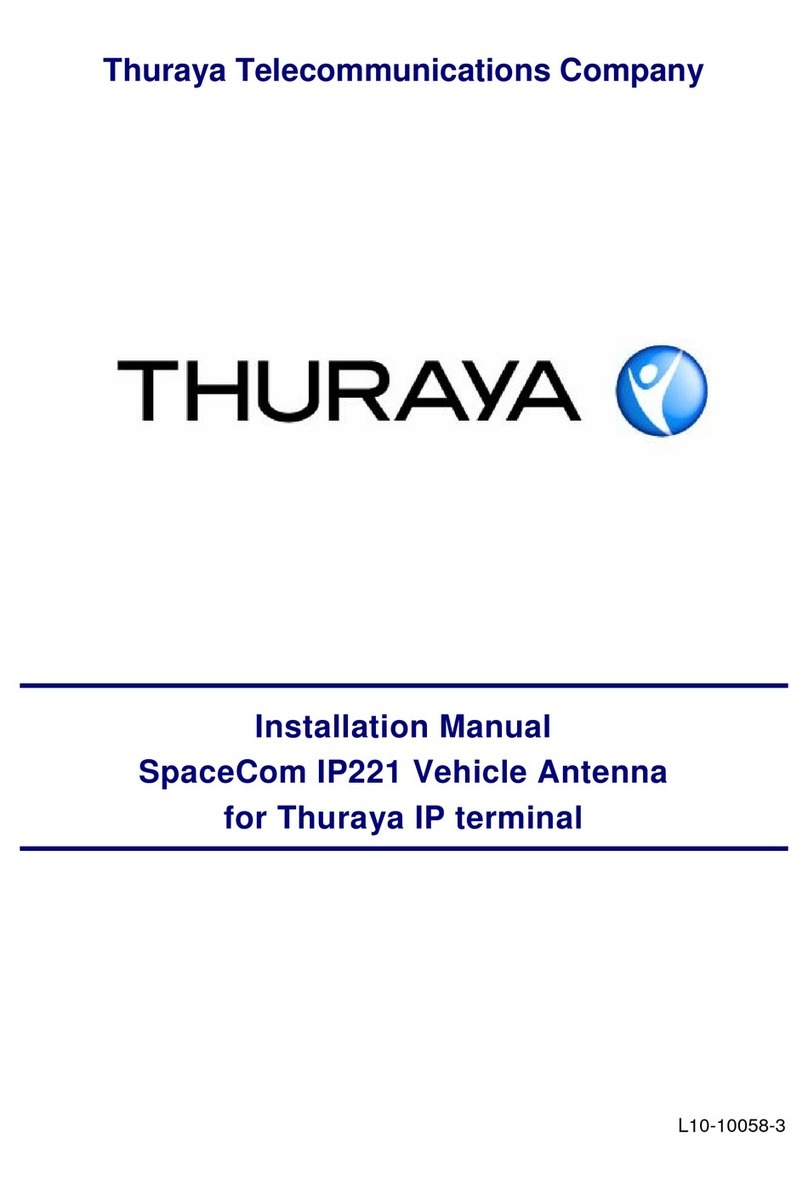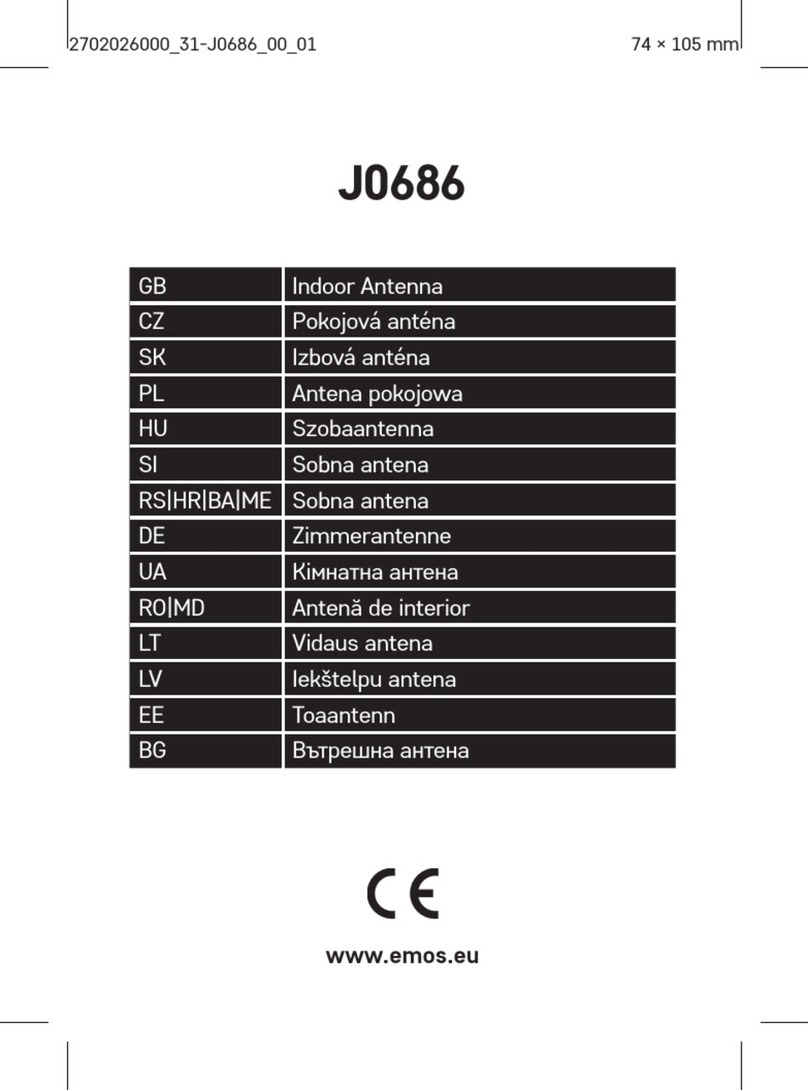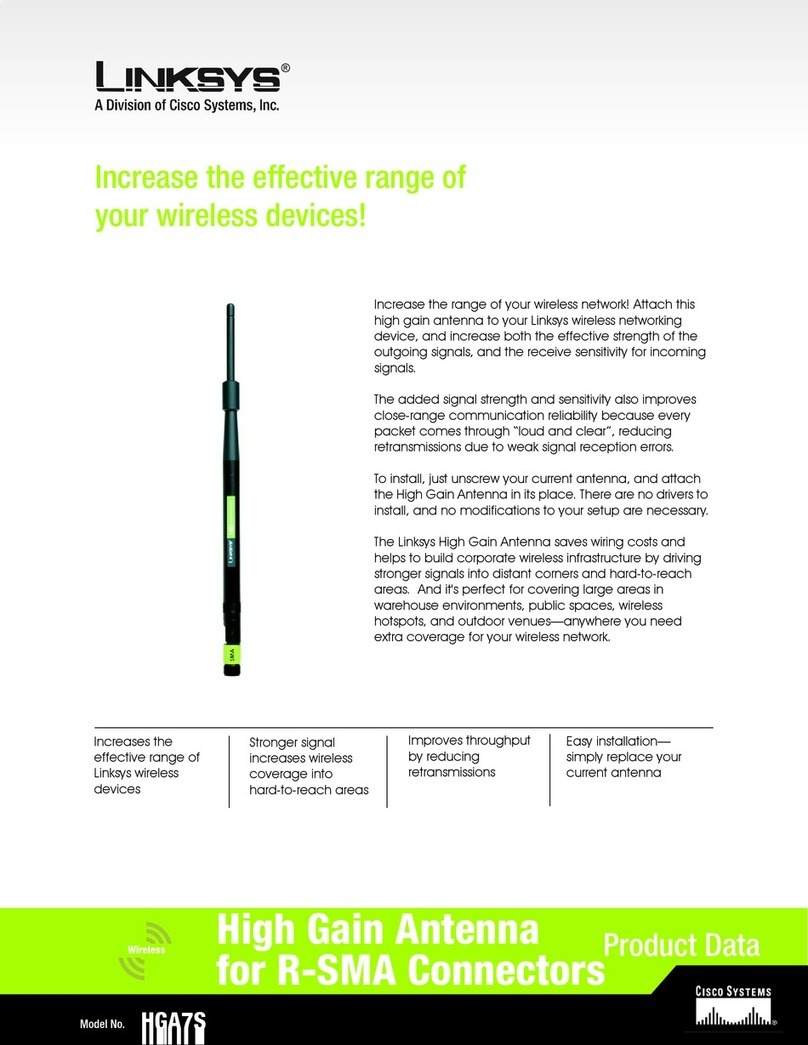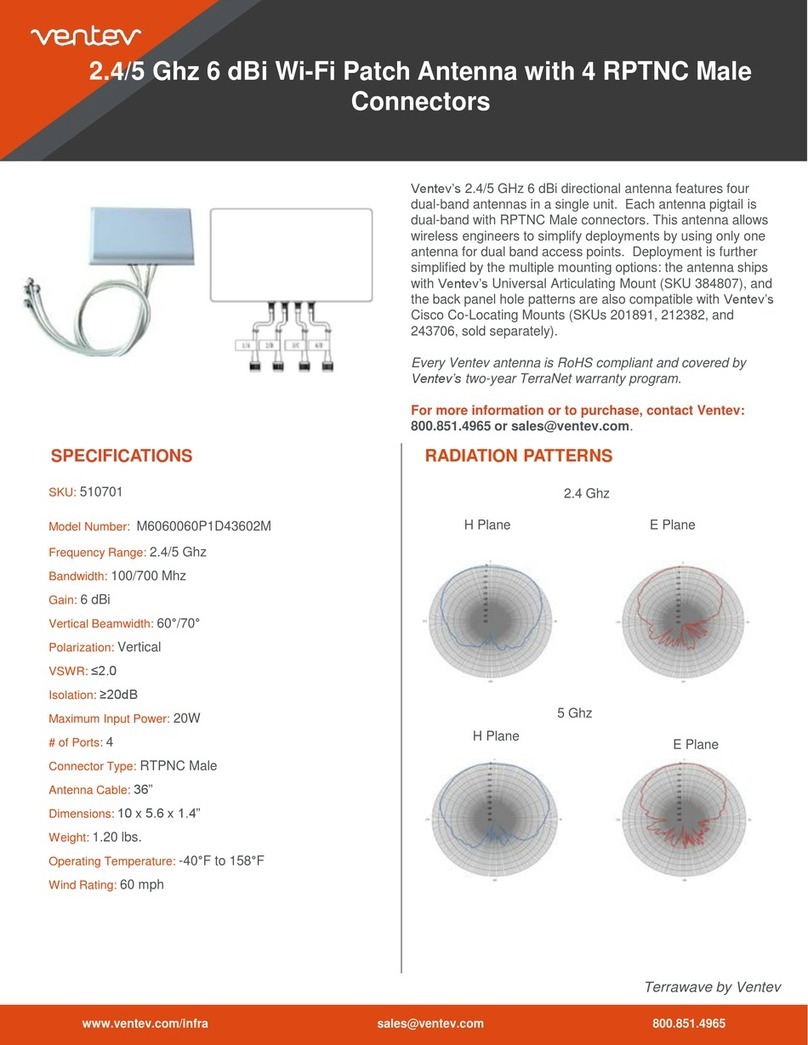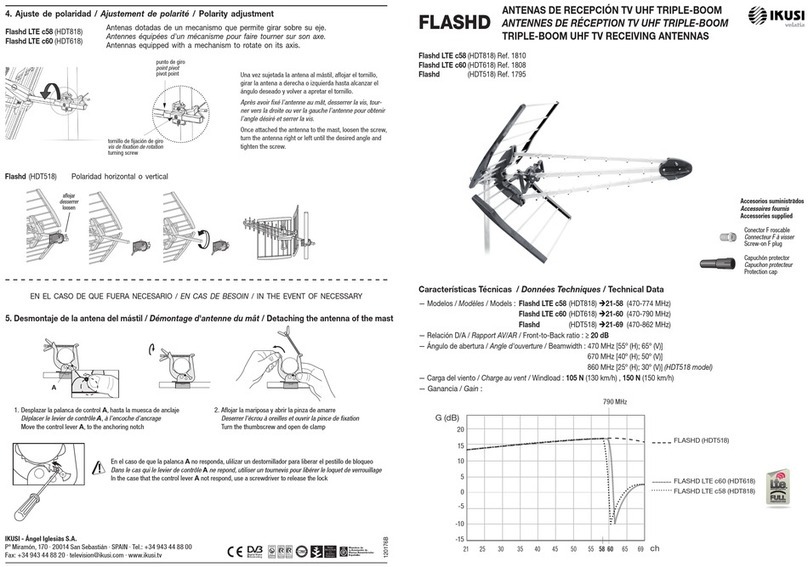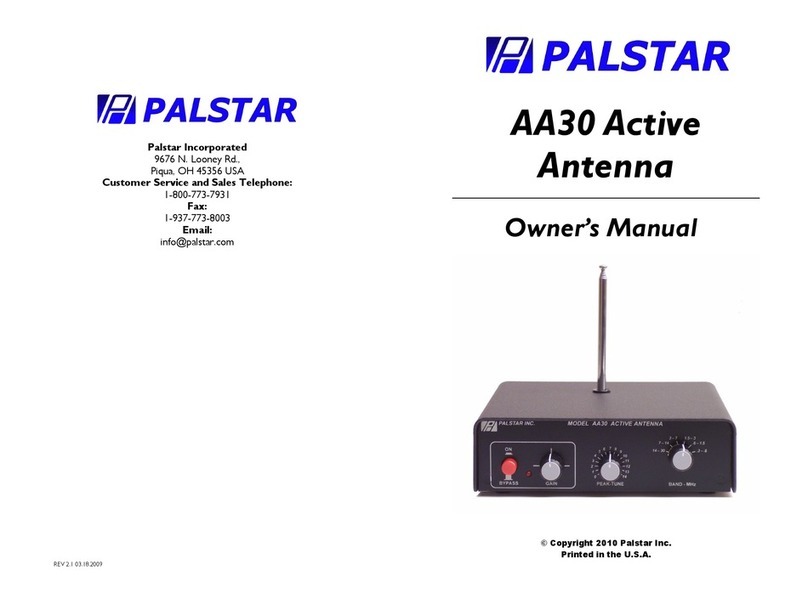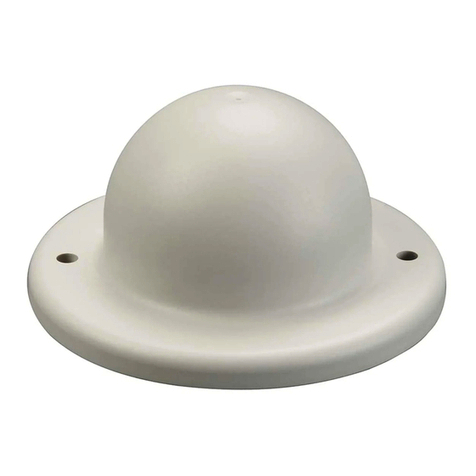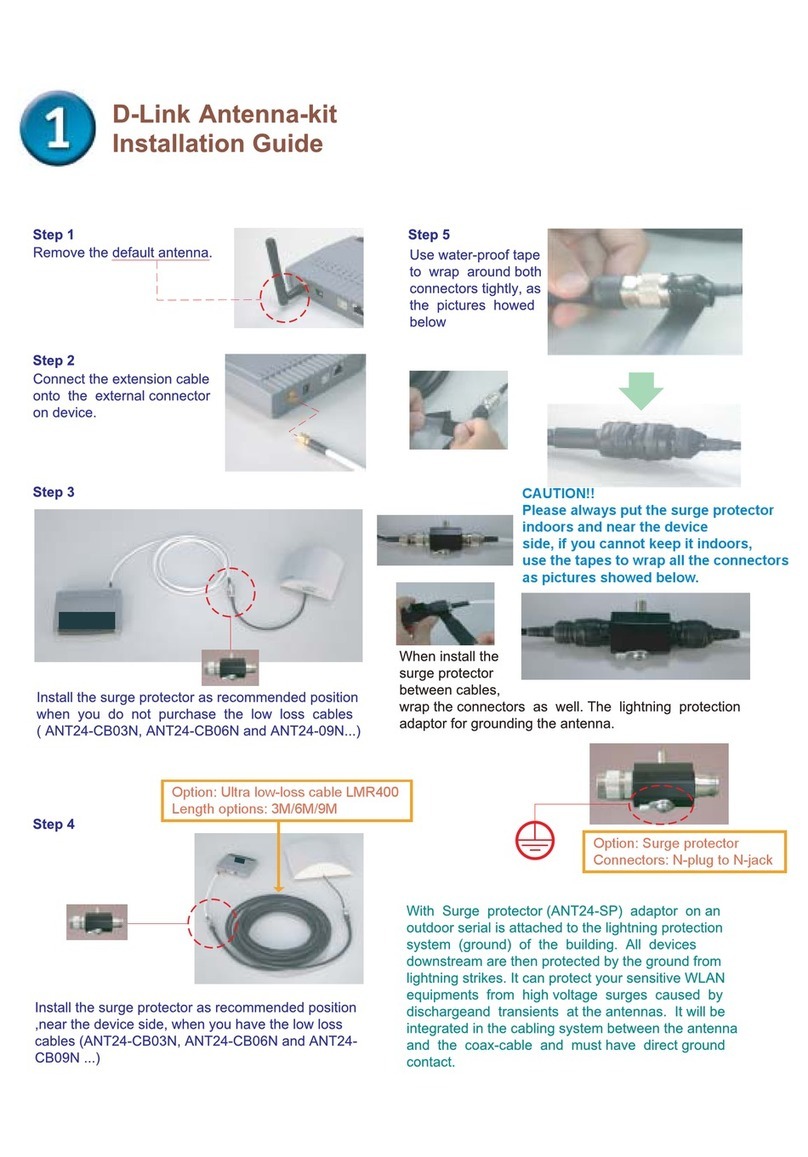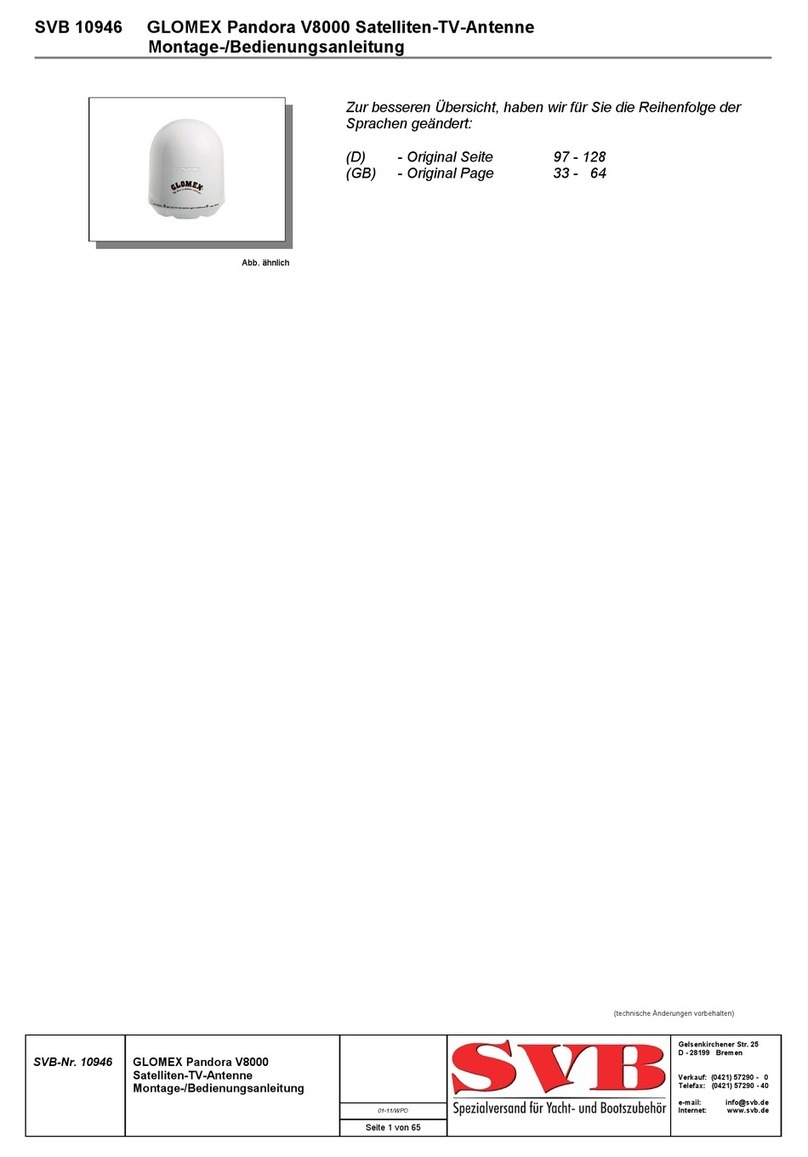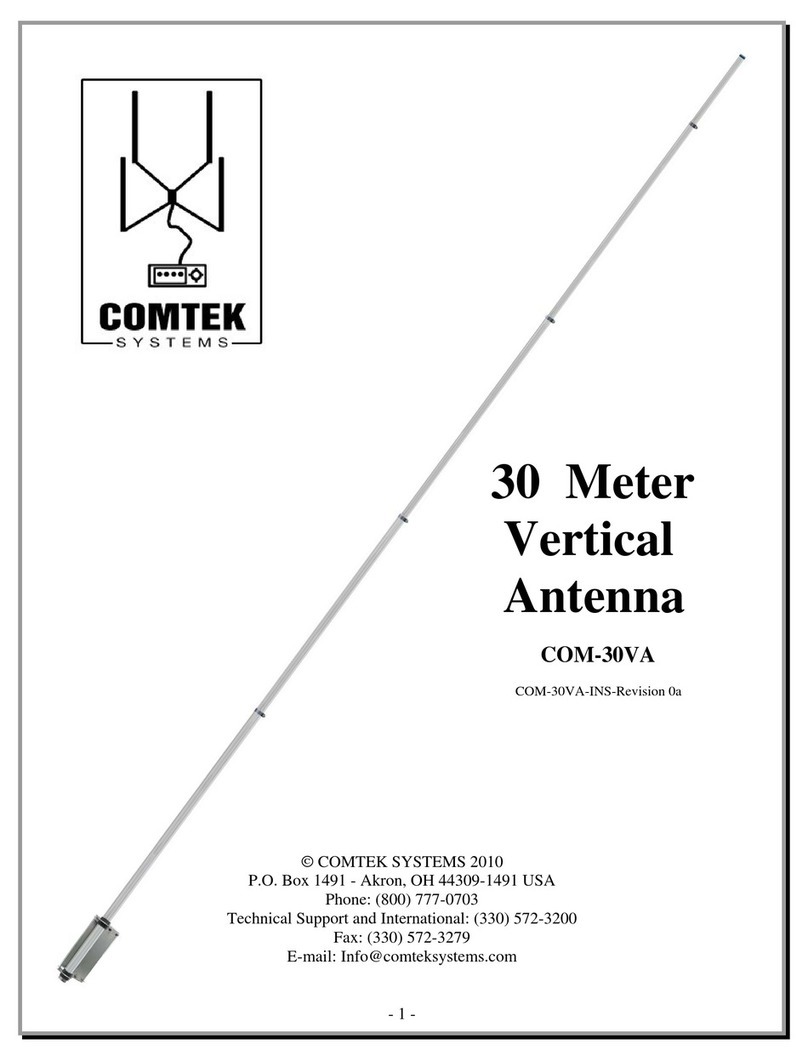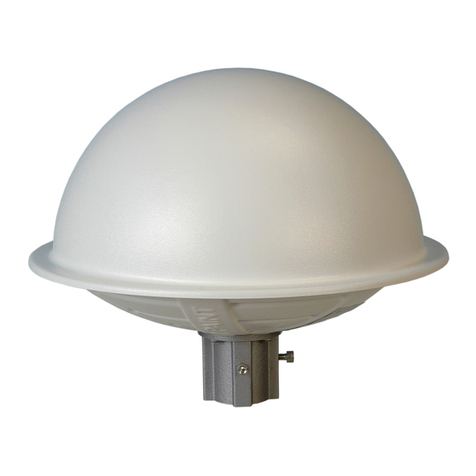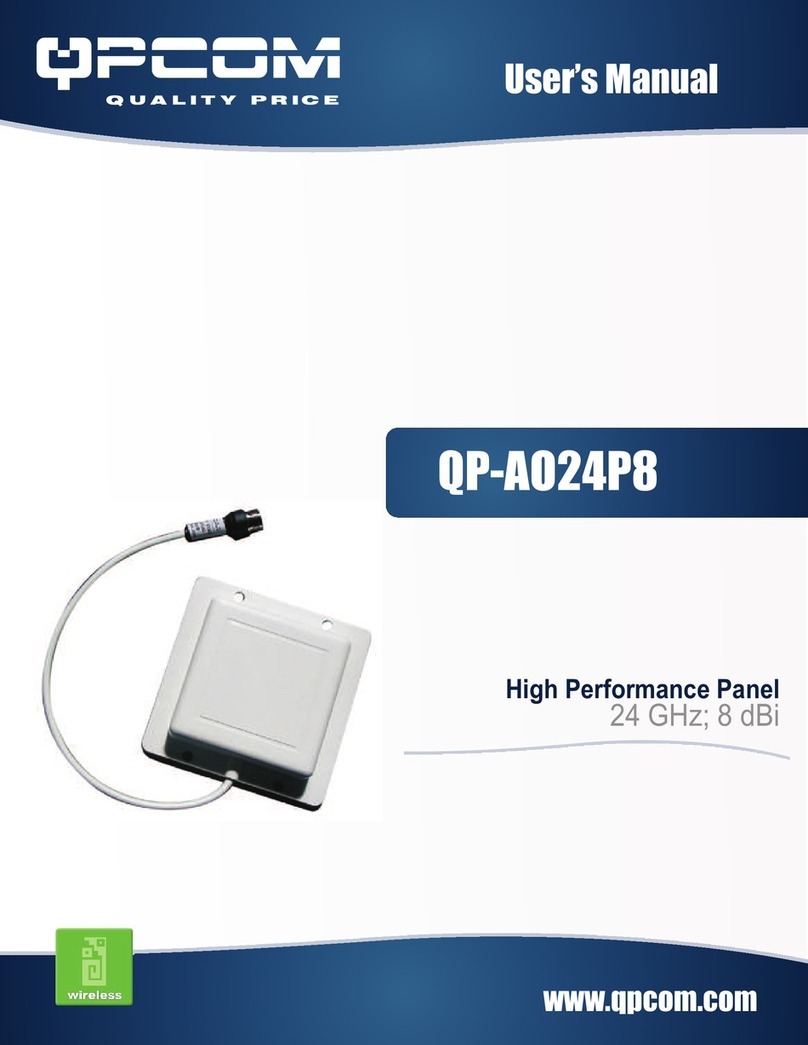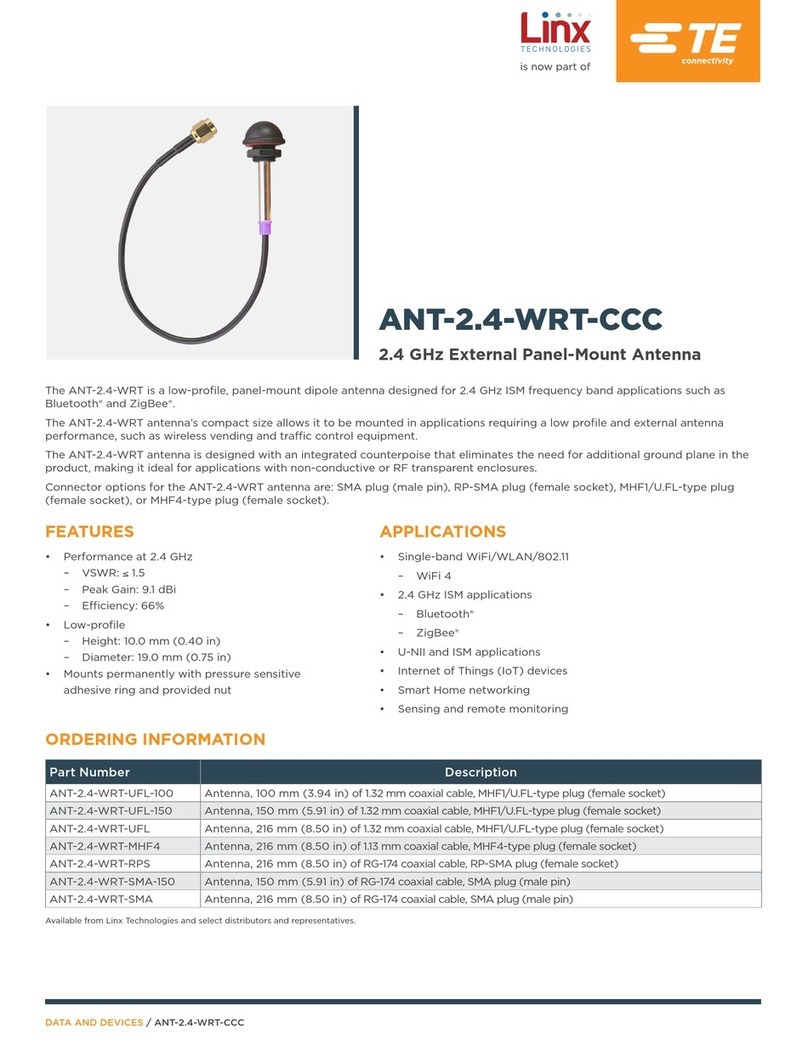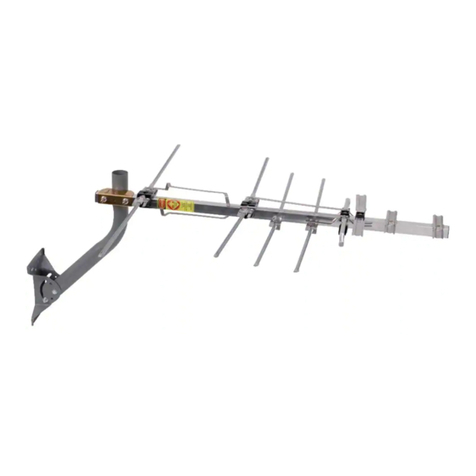Thuraya SpaceCom IP321 User manual

L10-10059-3
Thuraya Telecommunications Company
Installation Manual
SpaceCom IP321 Maritime Antenna
for Thuraya IP terminal

2
1.
Table of
Contents
1.
Table of Contents .........................................................................................................2
2.
Introduction...................................................................................................................3
3.
Specifications ...............................................................................................................4
3.1
Limits of Normal Operation .....................................................................................5
3.2
Absolute Maximum Limits.......................................................................................5
4.
Package Contents ........................................................................................................6
5.
Installation ....................................................................................................................7
5.1
Correct Placement of the Antenna..........................................................................7
5.2
Placement of Power Supply, AS03951...................................................................7
5.3
Mechanical installations using the Pole Mount Kit ..................................................7
5.3.1
Pole Mount Kit Contents ..................................................................................8
5.3.2
Pole Mount Component Description.................................................................8
5.4
Connecting to the Thuraya IP Terminal ................................................................10
5.5
Bending Radius of the Coax Cables .....................................................................12
6.
Operating the Antenna................................................................................................13
6.1
Satellite Acquisition...............................................................................................13
6.1.1
Blocking of the Satellite..................................................................................13
6.2
Satellite choice......................................................................................................13
7.
Appendices.................................................................................................................15
7.1
Basic Maintenance ...............................................................................................15
7.2
System fault finding ..............................................................................................15
Warranty ............................................................................................................................17
8.1
SpaceCom limited warranty statement. ................................................................17
8.2
Return of defective antennas and parts ................................................................17

3
2.
Introduction
The stabilized SpaceCom IP321 Maritime Antenna is designed for use with the Thuraya IP
terminal.
The SpaceCom IP321 Maritime Antenna is a 3-axis constant gain antenna designed for
maritime use. It is an autonomous satellite tracking antenna using a patented beam squint
technology and built-in control software to acquire the satellite and stabilize the antenna
using a tracking beacon from the Thuraya satellites. This ensures that the antenna is
always pointed optimally towards the satellite regardless of ship movements and position.
The antenna includes onboard LNA (Low Noise Amplifier) and HPA (High Power Amplifier)
in order to give a more versatile installation of the antenna and terminal by compensating
for cable loss resulting from long cables.
Figure 1. Cross section showing the SpaceCom IP321 Maritime Antenna inside the radome.

4
3. Specifications
Physical Characteristics
Dimensions Size of radome: 265x270mm (hxd)
Weight
3 kg (excluding cable and Power Supply,
AS03951)
RF Connector N type
Cable 15m RG223 or 25m LMR240
Electrical
Antenna Gain 10dBi approx
LNA Gain 32dB ±3 (excluding cable loss)
TX Gain 35.5dBi ±1 (excluding cable loss)
Polarisation LHCP
RX Frequency 1525 – 1559MHz
TX Frequency 1626.5 - 1660.5MHz
Max EIRP 16.5±1 dBW (Max. output from antenna)
G/T > -16dB/K
Terminal Connector SMC connector
Supply Voltage
To Power Supply, AS03951 10 – 32V DC
Power Consumption
60W at 10V DC, max EIRP
53W at 24V DC, max EIRP
Fuse 10A / trag, 5x20mm
Enviromental
Temperature -30 to +55°C
Humidity 95% at 40 °C
Wind 200 Km/hr Relative speed
Vibration Random Vibration of 1.05g rms
Motion
Roll: 25 degrees over 8 second periode
Pitch: 15 degrees over 5 second periode
Yaw: 8 degrees over 50 second periode
Turn rate: 12 deg/s
Turn angular rate change: 1 deg/s
2

5
3.1 Limits of Normal Operation
The antenna is designed to perform optimally within these operational limits:
Random vibration 1.05 g rms with the following spectral
density
5-20 Hz………….0.02G2/Hz
20-150 Hz……….-3dB/octave
Single frequency vibration 5-10 Hz with amplitude 2.54 mm
10-15 Hz with amplitude 0.76mm
15-25 Hz with amplitude 0.40mm
25-33 Hz with amplitude 0.23mm
3.2 Absolute Maximum Limits
Exposure outside these limits may cause permanent damage:
Temperature -45 to +60 degree C

6
4.
Package Contents
After opening the box check the contents (see Figure 2):
1. One stabilized SpaceCom IP321 Maritime Antenna
2. One pole mount installation kit
3. One Power Supply, AS03951
4. Cables for installation
1. 15 meter or 25meter coax antenna cable with N-connectors
2. 1 meter coax interface cable with SMA and SMC connectors
3. 1 red/black DC cable for the Power Supply, AS03951
5. External GPS antenna
6. One Installation Manual (this document)
Figure 2. SpaceCom IP321 Maritime Antenna package contents. Numbers refer to the contents list.
1
2
3
4.1
4.2
4.3
5

7
5.
Installation
Please observe the following warnings when installing the SpaceCom IP321 Maritime
Antenna with the Thuraya IP terminal:
WARNING:
•Only use the included pole mount installation kit for permanent mounting of
the SpaceCom IP321 Maritime Antenna. The kit is designed for easy
installation and ensures proper drainage of the antenna and is able to
withstand the rigid mechanical stress encountered on a vessel.
•Do not obstruct the drain holes at the bottom of the antenna (around the N-
connector) and at the bottom of the pole mount.
•It is very important only to use the coaxial cables supplied for the installation
of the SpaceCom IP321 Maritime Antenna!! Using other cables can cause
degradation or loss of the satellite link.
5.1 Correct Placement of the Antenna
•WARNING!! Avoid exposure to microwave radiation! Keep a safe minimum distance
of 1 meter around and above the antenna!
•Keep a clear line of sight to the satellite. Preferably avoid all obstructions within 3
meters of the antenna. Obstructions less than 15cm in diameter can be ignored
beyond this distance. Otherwise the line-of-sight to the satellite may be obstructed
and the satellite link performance degraded.
•Do not place the antenna close to interfering signal sources or receivers.
•Vibration levels in a typical installation are usually much less than the specified
maximum values. It is however the responsibility of the installer to verify, that the
cited levels are not exceeded in any mode of operation of the vessel. In case of
abnormal vibration, typically at a resonance frequency, measures must be taken to
displace the resonance frequency or to dampen the vibration amplitude.
•The external GPS antenna required for the Thuraya IP terminal should be placed at
least 1 meter from the SpaceCom IP321 Maritime Antenna and other interfering
signal sources or receivers (see the Thuraya IP manual for details on the external
GPS antenna).
5.2 Placement of Power Supply, AS03951
The Power Supply, AS03951 must be placed inside shielded from the elements.
5.3 Mechanical installations using the Pole Mount Kit
When installing a Maritime Antenna on a vessel the following important guidelines must be
followed in order to ensure that the antenna will operate trouble free throughout its service
life. Warranty will be void if guidelines are not followed.
The installation is based on a Pole Mount Kit AS-01518 supplied by SpaceCom.
Installation using the “Pole Mount Kit” is shown in Figure 3.

8
Installation of the SpaceCom IP321 Maritime Antenna on a post is done according to
Figure 3. The diameter of the post should preferably be between 35 and 50mm using the
standard U-bolt supplied in the kit. Notice the TORQUES for bolts and nuts.
Remember to connect the N-connector on the 15 meter or 25 meter coax cable as shown
in Figure 3 before fastening the antenna to the pole mount.
If a long (e.g. 3 meters) post is used onboard a vessel it is recommended that it is fastened
to the vessel using standard U-bolts rather than welding. This will enable the post to be
laid down in case removal of the antenna is required.
5.3.1 Pole Mount Kit Contents
The pole mount kit consists of the following components: (subject to change)
1) 1pc. Mounting Pole, Part No. SPAC-M00423
2) 1pc. Rubber Gasket, Part No. SPAC-M00425
3) 2pcs. U-bolt, Part No. SPAC-M01616
4) 2pcs. Flage, Part No. SPAC-M01617
5) 2pcs. U-bolt, Part No. SPAC-M01619
6) 6pcs. Plastic Bushings, Part No. SPAC-M01515
7) 1pc. Plug for Mounting Pole, Part No. SPAC-M01620
8) 4pcs. Nuts M5 A4, Part No. SPAC-M90-10008
9) 1pc. Screw M4*22 A4, Part No. SPAC-M90-10068
10) 4pcs. Nuts M6 A4, Part No. SPAC-M90-10168
11) 6pcs. Screw M6*40 A4, Part No. SPAC-M90-10205
12) 10pcs. Washer, Part No. SPAC-M90-10062
13) 4pcs. Washer M5 A4, Part No. SPAC-M90-10128
5.3.2 Pole Mount Component Description
1. Mounting Pole, Part No. SPAC-M00423, is a piece of standard tube, made from a
stainless steel alloy. The pole is part of the ventilation system for the radome. The
standard length is 400mm and must not be shortened.
2. Rubber Gasket, Part No. SPAC-M00425, is used to ensure that water or dust does
not enter into the area around the centre hole in the bottom of the dome. The centre
hole is part of the ventilation system for the dome and MUST NOT BE BLOCKED.
Also the gasket will protect the N-type connector from water and dust and hence
ensure long life.
3. U-bolts, Part No. SPAC-M01616, are used to fasten the Flange, SPAC-M01617 to
the Mounting Pole, SPAC-M00423, refer to Figure 3
4. Flange, Part No. SPAC-M01617 is used to connect the U-bolts, refer to Figure 3
5. U-bolts, Part No. SPAC-M01619, are used to fasten the Mounting Pole to any post
with a diameter between 35 and 50 mm, refer to Figure 3.
6. Bushes, Part No. SPAC-M01515, are used to ensure no electric contact between
the mechanical parts of the antenna (in the radome) and the Mounting Pole.
7. Plug, Part No. SPAC-M01620, is used for partially closing the bottom of the
Mounting Pole so that no surge of water will fill the tube or damage any part of the
antenna. Any condensing water within the antenna and/or tube is drained by the
plug. The plug will also prevent the coaxial cable from vibrating in the tube.

9
8. Nuts, Part No. SPAC-M90-10008, are M5 nut used for the u-bolts, SPAC-M01616,
refer to Figure 3. Nuts are to be tightened to 5Nm. Remember to use the washers
M90-10128 as shown in Figure 3.
9. Screw, M4*22, Part No. SPAC-M90-10068, is used to secure the plug.
10.Nuts, Part No. SPAC-M90-10168, are M6 nut used for the u-bolts, SPAC-M01619,
refer to Figure 3. Nuts are to be tightened to 8Nm. Remember to use the washers
M90-10062 as shown in Figure 3.
11.Screws, Part No. SPAC-M90-10205, are M6 (metric) 40mm long screws made of
stainless steel (A4) used for fastening the antenna to the flange on the Mounting
Pole so that the installation will endure vibrations and heavy loads due to wind or
surges from rough sea. Remember to use the washers M90-10062 as shown in
Figure 3. DO NOT CHANGE THE LENGTH OF THE SCREWS.

10
Figure 3. Installations using the standard pole mount kit.
5.4 Connecting to the Thuraya IP Terminal
The antenna is connected with the Power Supply, AS03951 by a single coaxial cable with
an N male connector at each end. The cable carries receive and transmit L-band signals
as well as DC power to the antenna. A separate coax cable is connected between the
Thuraya IP terminal and the Power Supply, AS03951. Figure 4 shows the connections.

11
Figure 4. Connecting the SpaceCom IP321 Maritime Antenna to the Thuraya IP terminal via the Power
Supply, AS03951.
Connect the 1 meter coax cable from the Power Supply, AS03951 to the terminal active
external antenna connector (see Figure 5). Remember to tighten the connecter in both
ends with 1Nm force.
To terminal active
external antenna
connector
To Thuraya IP
terminal external
GPS connector
To DC supply
10-32V DC
On/off switch.
USB connector
(Not used).

12
Figure 5. Connecting to the Thuraya IP terminal via the active external antenna connector.
The DC cable of the Power Supply, AS03951 is connected to the vessels power supply
with specifications defined in Section 3. Ensure that the polarity is correct. The DC step-up
converter in the Power Supply, AS03951 is isolated from the vessel’s 0V.
The external GPS antenna and Thuraya IP power supply cable must be connected
according to the Thuraya IP manual.
5.5 Bending Radius of the Coax Cables
Please observe the minimum bending radius for the coax cables. Warranty will be void if
guidelines are not followed.
Cable type Bending radius
RG223, 15m
RG223, 1m
Single bend: 25mm
Multiple bends: 50mm
LMR240 , 25m Single bend: 40mm
Multiple bends: 80mm

13
6.
Operating the Antenna
After the cable connections are made, apply power (10-32V DC) to the Power Supply,
AS03951 and switch it on.
Wait for the SpaceCom IP321 Maritime Antenna to acquire the satellite signal, this takes
approx. 1 minute.
Switch the Thuraya IP terminal on when the antenna is ready (see Section 6.1). Let the
terminal acquire the satellite network as described in the Thuraya IP manual.
6.1 Satellite Acquisition
The tracking antenna performs a full hemispherical satellite search to acquire the Thuraya
satellite every time power is applied. This takes approx. 1 minute.
6.1.1 Blocking of the Satellite
If blocking of the satellite signal happens, the antenna controller detects loss of the signal
from the satellite (can occur if large objects block the line-of-sight to the satellite).
The antenna controller will first try to reacquire the satellite by turning around two times
which usually will take only a few seconds. If this fails a full hemispherical acquisition is
performed to reacquire the satellite which can take up to 1 minute if a satellite signal is
available. If no signal is available the antenna will continue to scan the sky until a signal
can be acquired.
The antenna controller can stabilize the antenna at signal levels that are lower than the
operational limits of the Thuraya terminal.
6.2 Satellite choice
The Thuraya satellite system consists of 2 satellites with each satellite having its own
beacon the antenna can track. In order for the Thuraya IP terminal to have connection to
the network, the antenna must track the correct satellite.
When the antenna performs a satellite search it will search for both satellites but in most
covering areas only one satellite is visible and the antenna automatically detects this and
tracks the visible satellite.
In certain areas both satellites are visible and therefore the antenna can track either of
them, but only one of them will allow the Thuraya IP to connect to the network. The area
with both satellites visible is from longitude 60°East to 110°East.
In the case where the antenna tracks the wrong satellite no service will be available.
The user can redirect the antenna to the other satellite by, within the first 15 minutes after
powering on the system, toggling the power switch on the antenna power supply,

14
AS03951. This will redirect the antenna to track the beacon of the other satellite visible. It
is not necessary to power off the Thuraya IP terminal.

15
7.
Appendices
7.1 Basic Maintenance
The SpaceCom IP321 Maritime Antenna is designed for a long maintenance free life.
However, it is important to install the antenna correctly, not blocking the drain holes in the
bottom of the radome and pole mount and keeping the associated cables free from
damage and water ingress (see Chapter 5). Proper sealing of coax connectors and
fastening of cables will ensure long and trouble-free service.
7.2 System fault finding
If for some reason the system can not connect to the Thuraya network the following things
must be checked with respect to the antenna installation. For fault finding on the Thuraya
IP terminal, refer to its manual.
1. Check all cables are correctly connected.
2. Check the antenna is detected by the terminal.
a.Go to the web interface on the terminal and under the fan “Status” check that
the Satellite Antenna Type reads: “Active External”, see Figure 6.
b.If Satellite Antenna Type differs from “Active External” go to point 3 else the
antenna is detected and tracking a satellite, go to point 4.
3. The terminal has not detected the antenna. Perform the following.
a.Check the antenna is powered. This is be done first by switching off the
antenna on the antenna power supply, AS03951. Switch on the antenna
power supply, AS03951 and hear that the antenna is moving.
b.If the antenna is not moving check the fuse in the antenna power supply and
power connection to the antenna power supply, AS03951.
c. If antenna is moving check cable connection between antenna power supply,
AS03951 and Thuraya IP terminal. After checking the connection the
terminal must be restarted with the antenna power up first. Then go to point 2
again.
4. Switch tracking beacon as described in section 6.2 and restart Thuraya IP terminal.
If the above does not solve the problem, contact the Thuraya team with information of
terminal type, antenna type and antenna serial number. Antenna type and serial number is
found on the antenna radome bottom on a silver label marked with P/N and S/N.

16
Figure 6. Thuraya IP terminal web interface. Check for antenna type.

17
Warranty
8.1 SpaceCom limited warranty statement.
SpaceCom warrants that SpaceCom stabilized maritime antenna for ThurayaIP,
accessories and software will be free from defects in materials and workmanship after the
date of production for a period of 18 months.
If SpaceCom receives notice of such defects during the warranty period, SpaceCom will,
at its option, either repair or replace products which prove to be defective. Replacement
products may be either new or equivalent in performance to new.
The warranty does not apply to defects resulting from (a) improper or inadequate
installation or maintenance, (b) unauthorized modification or misuse, (c) operation outside
the published supply voltage and environmental specification for the product or (d)
improper site preparation or maintenance.
SpaceCom products may contain remanufactured parts equivalent to new in performance
or may have been subject to incidental use.
IN NO EVENT WILL SPACECOM BE LIABLE FOR LOSS OF DATA OR FOR DIRECT,
INCIDENTAL, CONSEQUENTIAL (INCLUDING LOST PROFIT OR DATA), OR OTHER
DAMAGE.
8.2 Return of defective antennas and parts
Before returning antennas or other equipment for repair, a RMA number will be issued by
SpaceCom. This RMA number must be included in the failure description in order to track
the repair.
The customer will arrange and pay for shipment to SpaceCom. After repairs SpaceCom
will return the product to the customer at SpaceCom’s cost. For antennas out-of-warranty
SpaceCom will charge the customer for repair and return shipment.
It’s important that failures are described as well as possible, and actions have been taken
to ensure failures are related to SpaceCom antennas and accessories – not due to faulty
installation.
If there are no failures found, the equipment will be returned and a handling fee charged.
Table of contents
Other Thuraya Antenna manuals
